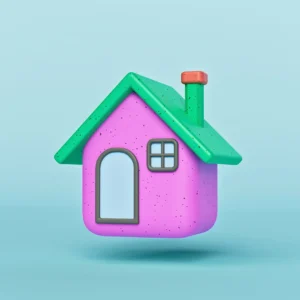In an earlier article we touched on the growing trend of home-based businesses and highlighted the importance of discussing income generating ventures with an insurance broker to arrange proper coverage. The insurance industry has recognized the popularity of gainful domestic enterprise—that creative entrepreneurial space between a full commercial business and a paper route—and the market has developed products to fill the coverage need.
All the risk of a private home and more
With a growing range of business activities conducted from home, it is important that the coverage solution align with the specific business activities and exposures.
For very minor business endeavors, coverage could be automatically extended under a personal property policy, but it is more likely a home-business extension or endorsement would be required to deal with residential policy exclusions.
Most home businesses will not require the dedicated coverage, wordings and premiums of a full-fledged commercial policy, but will introduce hazards beyond those normally associated with a private residence and beyond the coverage intention of homeowner’s or tenant’s insurance.
For the more substantial or complex business exposures, a commercial policy—with the associated underwriting expertise, wordings and pricing—would be required.
Risk? What risk?
So, what’s the big deal about an incidental business operated from the home?
It comes down to increased risk of loss. In the world of insurance underwriting, risk analysis is understanding what can go wrong, how likely it is to happen, and how bad it could be. In industry terms that means determining the hazards that come with the property and operations of the insurance customer. It’s an assessment of the potential for loss occurrences from both a frequency and severity perspective.
While a career of such sombre deliberation may seem a rather depressing way to make a living, the art of the craft—and spirit-redeeming reward of a day’s work—is found in the solution: providing the right coverage, terms and price to adequately protect the customer and accurately reflect the risk.
Taking Care of Business
For home businesses—and small businesses, generally—much of the decision making and calculation of premium is baked into a menu of automated, data-driven, rules-based products and solutions. But the eligibility and pricing models underlying those solutions remains rooted in the fundamentals of loss exposure and risk analysis.
At its core, the object of home business insurance is the same as for a private home: to protect against physical loss or damage to property and to safeguard the family in the event of legal liabilities for injury to the person or property of others. But businesses operated from the residence can introduce unique property, processes, or products that push the risk of loss beyond the normal scope of a private dwelling.
In the home, a grease fire may damage the kitchen cabinets; the big screen TV and family jewelry may be stolen in a home break-in; a lawsuit could be filed for the injuries of the pizza delivery dude who slipped on your icy front stairway; an ill-humoured neighbour may present a repair bill when a hockey puck finds its way into their kitchen via a shattered window situated in suspicious alignment to your kids’ backyard ice rink.
All the loss scenarios of a personal home still apply, but with a business comes additional exposures.
What could possibly go wrong?
How might the odds of having a loss increase for a small business operated from the home? When customers enter the equation, so too arrives a new source of risk.
In this article we’ll review business risk under six general coverage elements and provide an idea of what the underwriting process needs to understand to arrive at a coverage solution. Few home operations will increase risk of a loss in all the subsets described below, but all businesses will generate exposure to loss in some of them.
And exposure to loss is not limited to the cost of damaged property or legal liabilities to others on the part of a business. It is not uncommon for consumers of goods and services to pursue the business—on legitimate grounds or otherwise—when things go wrong. Even operations with seemingly minimal exposure could be subject to significant legal costs and other expenses in defending a fallacious claim filed against it.
Here are some loss exposure and risk management considerations, organized by coverage section, that may help demonstrate how a home business—or any business—can impact the risk of having a loss or claim:
1) Building, property, crime
The first thing to know is homeowner’s and tenant’s policies generally exclude business property. In some wordings there may be minor exceptions to the exclusion. If a policy wording allows for a level of incidental business (eg. babysitting, home office, school, studio) there is usually a provision to cover property owned, or for which the insured is legally liable, if the property relates to the permitted business.
For home business operations beyond the exceptions, policy changes need to be made to provide proper coverage and reflect added exposure. A business or commercial-type operation can increase the chance of a property loss occurring and add to the severity of damage when a loss does occur.
What are some considerations in the assessing how the property, processes, or product might impact the potential or severity of a property loss?
- Are there tools, equipment, stock, customers goods, or cash on site adding to values or making a risk more susceptible to break-in and theft?
- Will the business activities increase the potential for vandalism to property?
- Is there added risk of fire or other loss in the operation of tools or equipment?
- Does the presence of combustible materials (paper, cardboard, garbage) provide conditions that may cause or exacerbate a fire?
- Are higher than usual stocks of flammables (fuel, paints, lacquers, thinners) stored on site?
- Are heat processes involved (welding, grinding, cutting etc.)
- Do work processes create dusts or vapours (wood finishing, craft painting) increasing the chance of explosion or severity of a fire?
Get a business insurance quote in minutes.
2) Liability – premises and operations
As with physical property, there are exclusions under homeowner’s and tenant’s policies dealing with liability arising from business activities and operations.
The ownership or occupancy of a building or premises comes with a duty of care and establishes the possibility of being held liable in the event of injury to a visitor. Safe physical conditions are important for any home or business and the risk of a loss arising from a deficiency will rise in proportion to public traffic.
For a business there is often more people coming through, many unfamiliar with the property. Uncleared snow or ice, missing or faulty handrails on porches and stairways, poor lighting, an overly spirited household pet, or a minefield of childrens’ toys, can magnify risk.
- To what degree does the business increase public traffic (customers, vendors, suppliers)?
- Does the property comply with applicable building codes?
- Is the property well maintained with required repairs made promptly?
- Is there a contract or active practice for timely snow clearing, ice salting?
Work processes and operations conducted on the property can also increase the potential for damage or injury to the property or person of others.
- Do processes increase the risk of fire or explosion, exposing third parties from other units or adjacent buildings to damages?
- Are there processes or conditions on site that increase the chance of injury to visiting third parties?
- Is safety equipment (hardhats, protective glasses or shoes, particle or vapour mask) required / provided in the case of active shop areas?
3) Liability – operations off-premises
If a business involves work away from the home base and at the properties of others, another level of liability exposure comes with it: A painter accidentally tips the blue semi-gloss onto the customer’s white shag carpet; the home stager knocks over a family heirloom vase when repositioning a coffee table, the handy-person forgets the ‘call before you dig’ requirement before driving the power auger into the gas line while drilling deck post holes.
- Range of work and services conducted?
- What are the qualifications / licencing status?
- How many years experience with the specific work / trade?
- Has there been prior insurance?
- Have there been any prior losses or claims?
4) Liability – completed operations
The work provider’s responsibility does not end just because they’ve finished the job and left the site.
When someone presents themselves as qualified and charges a fee for service, they assume some legal responsibility for damages arising out of poor work. While insurance is not intended to cover the shoddy work itself, it does come into play for losses that may ensue from that work.
For example, a customer would have recourse when a plumber’s failure to properly tighten a water supply connection results in water and mould damage; or when a house fire ensues after an electrician crosses the wires while installing a new dimmer switch.
The chances of being held legally liable for damages are higher for businesses advertising services and charging fees than for a helpful neighbour resourcefully googling ‘gas barbeque assembly’ minutes before blowing up your porch.
Information useful to the analysis of completed operations exposure is similar to the section above:
- Range of work and services conducted?
- What are the qualifications / licencing status?
- How many years experience with the work / trade?
- Projected gross receipts?
- Has there been prior insurance?
- Have there been any prior losses or claims?
5) Liability – products
While sections above deal with things that go wrong after work is completed, there is a similar exposure for losses occurring after a customer takes possession of a product sold.
The underwriting process seeks to understand the product(s) and the prospective customer in order to assess the exposure. A producer of infant toys (choking / poking hazard) or furniture (design flaw, collapse) carries far greater exposure than the maker of innocuous arts and crafts. The internet as a means of promotion and sales opens the possibility of a worldwide market. U.S. sales delivers a product into a substantially more litigious market than would be the case from a vendor table at a local flea market.
- Full details of all products sold?
- Any alteration or repackaging of the products of others?
- How is the product marketed / sold (Internet, grocery store bulletin board, customer referral)?
- Is product sold on consignment? Contract details?
- Are products sold to the United States?
- Are any warranties provided or disclaimers made?
- How long has the product be produced / sold?
- Number of units sold / sales revenue?
6) Liability – professional
Some work carries such a duty of care and qualification that standard liability wordings exclude exposures in favour of specialized coverage for professional liabilities. It is likely no surprise that doctors, dentists and lawyers have considerable malpractice or errors and omissions exposure.
Less obvious professional exposures are found in operations such as publishers / writers (personal injury – libel), hairdressers (burns, eye damage, chemicals), accountants (money mismanagement), consultants / agents (bad advice, failure to perform), therapists and counselors (advice repercussions), modality providers (massage, acupuncture, reflexology complications).
At the home business level, if you’ve set up a chair to be an occasional hairdresser, plan to parlay a reflexology course and a massage table into an income stream, or are churning out tax returns or developing software after retiring from career of similar, there are exposures to cover off.
- Complete description of services provided?
- Experience in the field / credentials?
- Are written waivers obtained?
- Has there been prior insurance?
- Any past incidents or claims?
If all this seems a little overwhelming, rest assured that a customer operating a small business from home will be asked only the questions relevant to the specific operation. Through available data and a practical understanding of the risks that come with a small home business, logical assumptions are made in the development of products, eligibility profiles and rating for popular home businesses.
The questions and considerations shown here are intended to illustrate how physical conditions and operations of a business create risk beyond that of a personal residence. They highlight some of the factors that contribute to exposures for a home business and drive the coverage solution: automatic personal policy extension; home business extension; or separate commercial policy.
The first step to ensuring proper coverage for an income business from the home is to discuss the operation with an insurance broker who will ask the right questions and recommend a suitable coverage solution.
Looking for business insurance?
Speak with a Mitch Insurance broker today to get a quote on Ontario business insurance. Learn more >
Call now
1-800-731-2228




